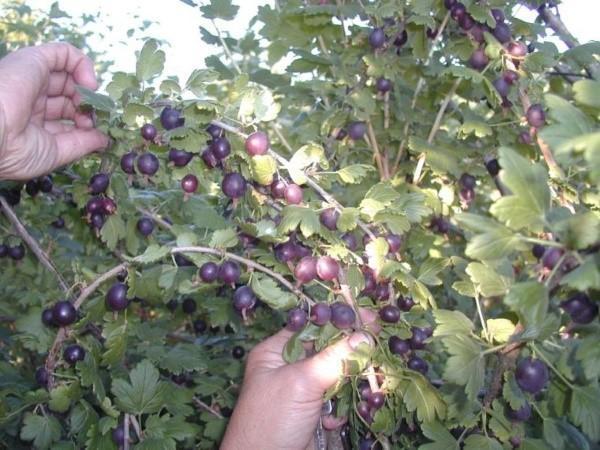Growing yoshta: what is the secret of the popularity of an unpretentious hybrid shrub
 The dream of any gardener is to get an "independent" crop that, with minimal maintenance, will yield a stable harvest. If you are also not averse to having such a plant, we suggest mastering the cultivation of yoshta. This unique berry bush is not only unpretentious, but also very resistant. He is not afraid of diseases or pests, in addition, large, curvy forms will also serve as a decoration of the site.
The dream of any gardener is to get an "independent" crop that, with minimal maintenance, will yield a stable harvest. If you are also not averse to having such a plant, we suggest mastering the cultivation of yoshta. This unique berry bush is not only unpretentious, but also very resistant. He is not afraid of diseases or pests, in addition, large, curvy forms will also serve as a decoration of the site.
What is Yoshta
Yoshta is a culture obtained artificially as a result of crossing currants and gooseberry... The aim of the breeders was to improve the quality of the currant. It was planned to increase the size of berries, increase productivity and resistance to diseases. And they succeeded: yoshta pleases gardeners with large berries, while it does not require special care.
Joshta was created in Germany in the 1980s. It owes its name to the fusion of the first syllables of the German names of the parents of the culture, currants and gooseberries ("johannesbier" and "shtachelbir").
The currant culture bypassed not only in yield, but also in size: the diameter of the bush reaches 2 m with the same length of shoots. By the way, there are no thorns on them. But the leaves are similar to currant, but without a characteristic smell and last until late autumn. This makes the shrub an excellent ornamental plant, especially during flowering, when many bright yellow buds are blooming. The bush is no less beautiful during the ripening period. In place of the flowers, large berries are poured, gradually changing color from green to dark purple. They have a pronounced sourness. At the same time, they almost do not smell like currants, and do not have a fleecy coating like gooseberries.
One of the main advantages of yoshta is its increased stability. She is not afraid of the diseases that gooseberries and currants suffer from. The bush also does not attract pests.
Growing yoshta: simple secrets of a good harvest
It is better to choose a place for culture that is bright, without drafts. When planting in a hole, it is advisable to add fertilizers, organics or minerals. This will make it possible to do without additional fertilizing of the bush up to the next 3 years.
The root system of the yoshta lies at a depth of 40 cm, which must be taken into account when planting seedlings and caring for them. You need to leave a lot of space between the bushes, since they grow strongly to the sides. To obtain a good harvest, the distance between plants when planting in groups should be at least 1.5 m.
If the yoshta is planted as a hedge, it is enough to maintain a distance of about 40 cm between the seedlings. Then such a fence will be dense and high.
It is not for nothing that Yoshta is called a plant for a "low-maintenance" garden. It can grow with little or no gardener involvement. In general, caring for a culture consists of several simple procedures, namely:
- Watering plentifully at planting, and then as needed.
- Mulching the trunk circle to retain moisture.
- Pruning. When the bush reaches 5 years of age, you need to rejuvenate it annually, cutting out 3-4 old branches, and leaving in return the same number of new shoots. One plant should have branches of different ages, but no more than 15 pieces.
As for preventive spraying, which takes a lot of time, they are not important for the culture. The plant does not need such procedures, as it rarely gets sick.Thus, growing yoshta will not cause much trouble, but it will please you with a bountiful harvest.